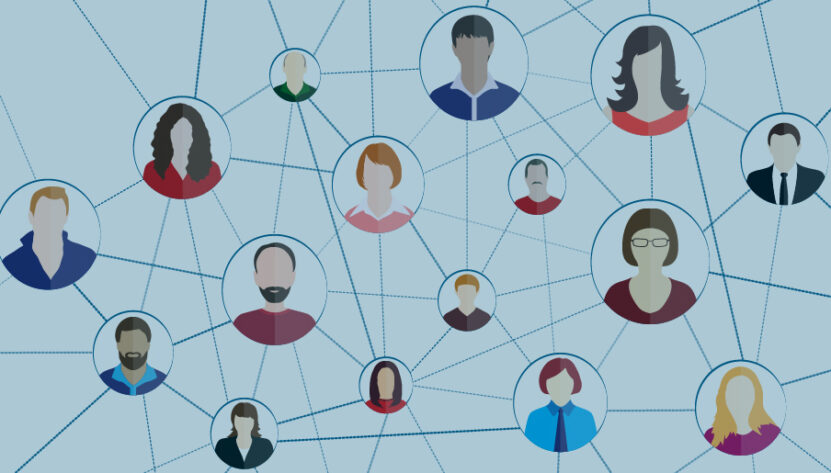In today’s hyper-connected world, the art of networking has taken on new dimensions. It’s no longer just about handing out business cards at conferences or attending casual meet-ups. Networking now encompasses online platforms, virtual gatherings, and even the shared experiences of interactive webinars. With such an expansive domain, understanding the nuances and leveraging the potential of networking becomes crucial for personal and professional growth.
The Traditional Versus The Digital

Traditionally, networking was a face-to-face endeavor. Events, seminars, and conventions provided platforms for professionals to meet, exchange ideas, and potentially find opportunities for collaboration. These gatherings were essential for professionals in every field, offering both a chance to learn and an opportunity to showcase one’s prowess and value to potential employers or partners.
However, with the advent of technology and the internet, the dynamics have shifted dramatically. While face-to-face interactions are still invaluable, platforms like LinkedIn, Twitter, and industry-specific forums have amplified the networking game. These platforms allow for connections across continents, fostering relationships that would have been impossible a few decades ago. The digital realm has not only expanded the reach but also the frequency of interactions, with real-time conversations happening 24/7.
LinkedIn’s User Statistics highlight the enormity of digital networking, showing how millions of professionals connect daily to explore collaborations, learn, and grow.
Why Is Networking So Vital?
- Learning from the Best: One of the most significant advantages of networking is the chance to meet and learn from industry leaders. By attending seminars, webinars, or even simple coffee meets, one can gain insights from those who have ‘been there and done that’.
- Discovering Opportunities: It’s often said that the most rewarding job opportunities aren’t always advertised. They’re found through connections, referrals, and word-of-mouth. Networking casts a wider net, allowing individuals to be in the right place at the right time.
- Collaborations and Partnerships: Building a business or advancing in a career isn’t a solo journey. It requires collaborations, partnerships, and teamwork. Networking paves the way for these associations, allowing like-minded individuals to converge and create value together.
- Personal Growth: Networking isn’t just about the professional facet; it’s about personal growth too. Meeting individuals from diverse backgrounds, industries, and cultures widens one’s perspective, offering a more holistic view of the world.
Maximizing Networking Opportunities

While the advantages of networking are evident, how can one make the most of these opportunities?
- Be Genuine: While it might be tempting to put on a facade, genuine connections stem from authenticity. It’s vital to be oneself, showcasing both strengths and vulnerabilities.
- Research and Preparation: Before attending an event or joining a platform, do your homework. Understand the participants, the theme, and the objectives. This preparation will help in steering conversations and making meaningful connections.
- Follow-Up: Networking doesn’t end with a handshake or a connection request. It’s crucial to follow-up, nurture the relationship, and transform a chance meeting into a lasting connection.
- Diversify Your Network: While industry-specific connections are invaluable, a diverse network can offer unique insights, cross-industry opportunities, and a broader perspective.
- Keep Learning and Sharing: Networking is a two-way street. It’s not just about what you can gain, but also about what you can offer. Regularly updating one’s skills and knowledge can make one a valuable connection for others. For instance, focusing on acquiring and updating your resume skills for sales can make you a sought-after contact for others in the field.
Networking Challenges
In today’s interconnected world, networking, both professional and digital, is paramount. Yet, challenges abound. For professionals, the sheer volume of potential connections can be overwhelming, leading to indiscriminate networking without clear objectives. Additionally, there’s the inherent difficulty of maintaining authenticity while cultivating valuable relationships. Digital or technological networking isn’t exempt from challenges either. Here, issues range from maintaining security and privacy in interconnected systems to ensuring consistent and high-speed connectivity in areas with infrastructural limitations.
Networking Metrics

Measuring the effectiveness of networking efforts is crucial. For professional networking, metrics might include the number of meaningful connections made at an event or the tangible outcomes of networking, such as job referrals, collaborations, or partnerships. Online platforms, like LinkedIn, provide analytics on profile visibility, engagement rates, and connection growth, which can guide strategies. In the realm of technological networking, metrics are more quantifiable. They include data transmission speeds, latency, uptime percentages, and error rates. These figures are pivotal in gauging the efficiency of a network and pinpointing areas for improvement.
Networking Technologies
The technological landscape of networking is in constant flux, shaped by the ceaseless march of innovation. Traditional wired networks, once the backbone of internet connectivity, are gradually being supplemented or replaced by faster, more efficient wireless technologies. Wi-Fi 6, the latest Wi-Fi standard, offers faster data download and upload speeds, catering to our increasing demands for high-speed internet. On the horizon, 5G technology promises not just faster speeds but a revolution in how devices connect, facilitating the burgeoning Internet of Things (IoT) ecosystem. Additionally, software-defined networking (SDN) is redefining how network management and configuration are approached, introducing flexibility and programmability.
The Future of Networking
With technology playing an increasingly vital role, virtual and augmented reality platforms are set to redefine networking. Imagine attending a global conference from the comfort of your home, interacting with participants as if they were right beside you. These advancements will bridge geographical gaps, making the world a smaller, more connected space.
Additionally, a report by Harvard Business Review suggests that networking will become more purpose-driven, with individuals seeking connections that align with their values, objectives, and aspirations.
In Conclusion
Networking, both traditional and digital, is an art and a science. It requires effort, authenticity, and a genuine desire to connect. The importance of networking—both as a professional endeavor and a technological infrastructure—continues to grow, understanding its challenges, metrics for success, and the technologies driving its evolution becomes indispensable. In addition, with the ever-evolving landscape of professional growth, networking remains a steadfast pillar, helping individuals and businesses soar to new heights. Whether you’re a seasoned professional or just starting, embracing the power of networking can open doors you never knew existed.

